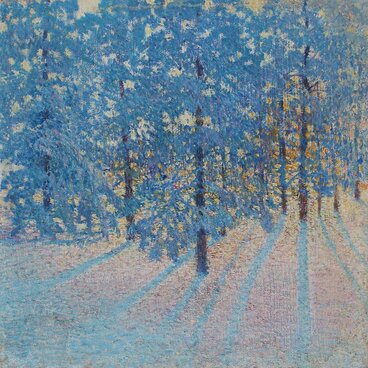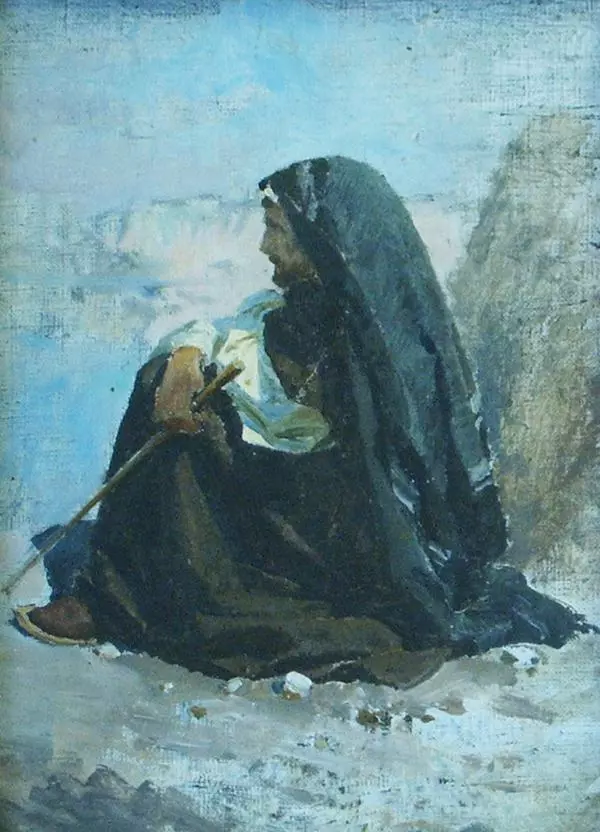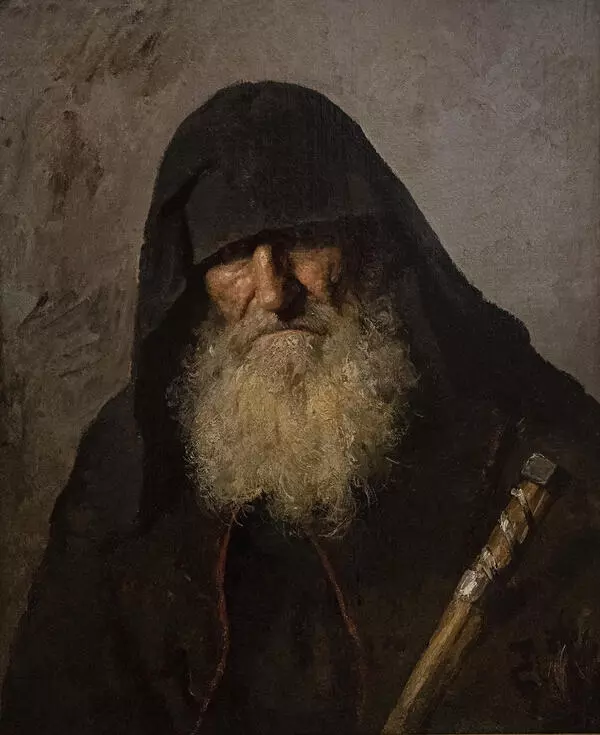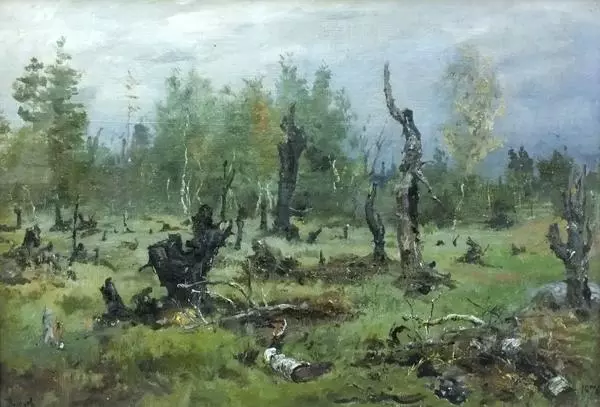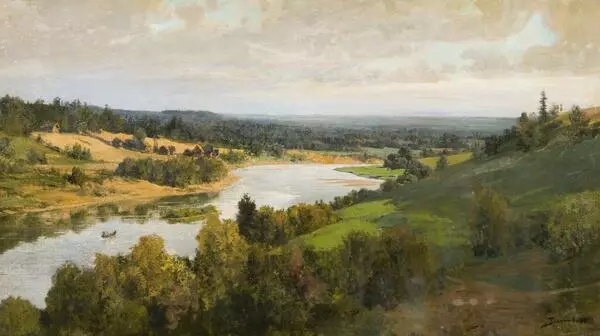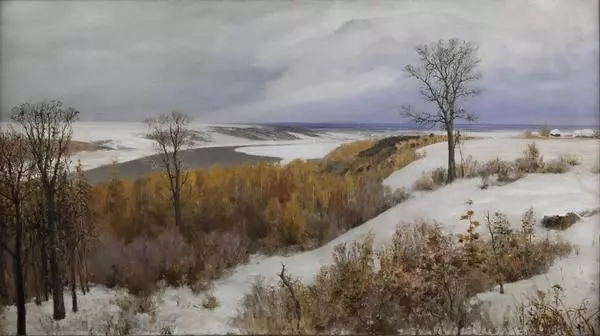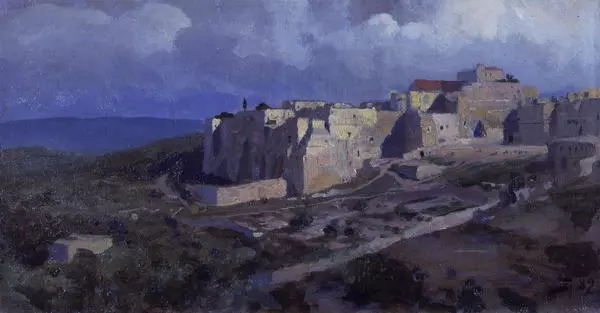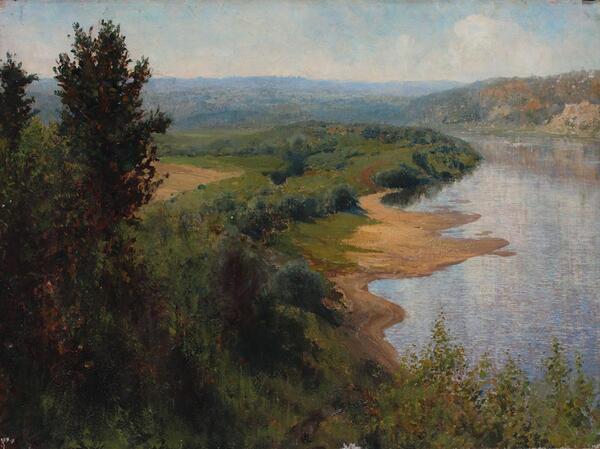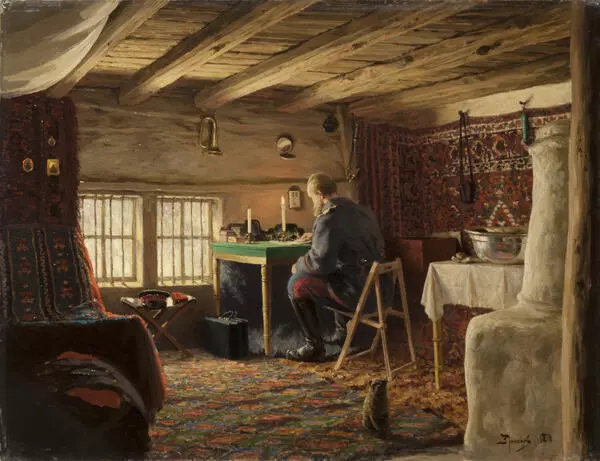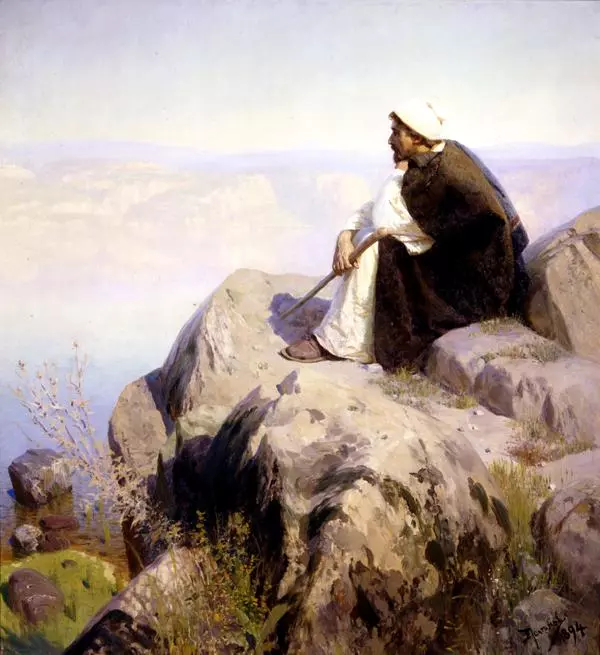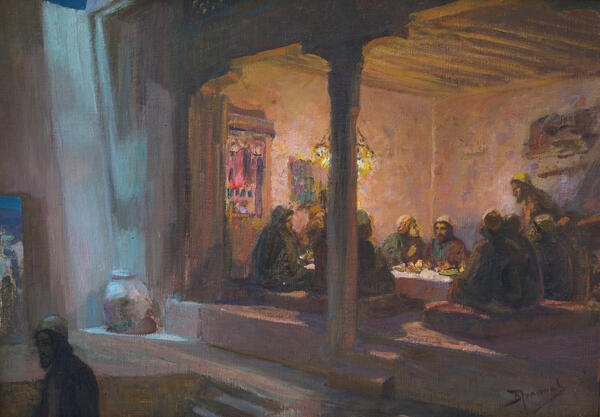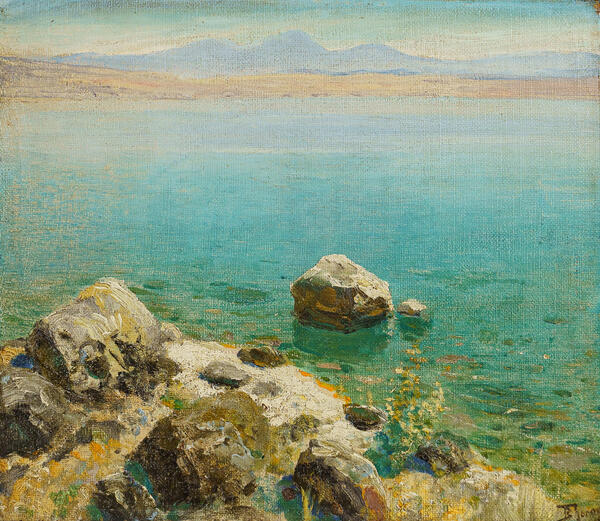The exhibition of the Sevastopol Art Museum named after Mikhail Pavlovich Kroshitsky features the painting “Antique Landscape” by the outstanding Russian painter Vasily Dmitrievich Polenov. The artist created a generalized, synthesized image of Greece — “a radiant country of victorious good and reason, embodied in the perfect forms of its artistic creations.”
Vasily Dmitrievich Polenov was a talented landscape painter who created popular works on mythological subjects. He was a highly educated polymath. He had an excellent knowledge of history and ancient literature, loved music, so he was always eager and happy to participate in theater productions in the Private Opera of Savva Ivanovich Mamontov as a set designer, actor, and even composer. In 1894, Polenov designed the set for a tableau vivant entitled “Aphrodite”, staged at the First Congress of Russian Artists in the hall of the Assembly of the Nobility. He later used the solution for the design of the opera “Ghosts of Hellas” made by him together with Nikolai Sergeyevich Krotkov on the libretto by Savva Mamontov. The opera was staged in 1906 in the Great Hall of the Moscow Conservatory by amateur musicians. The performance received mixed reviews — enthusiastic, reserved, and even skeptical ones.
In the same 1906, as if generalizing and
summarizing his thoughts on antiquity, relying on numerous sketches and
variants of set designs, Vasily Polenov made an easel painting in its own right
known as “Antique Landscape”. The soundness and purity of tone, the blinding
glow of the sun on the warm surface of smooth marble — all this speaks of a
clear and sublime beauty. The artist managed to combine reality and fiction, plein-air
studies painted during the first trip to the Middle East and Greece in
1881–1882, and widely known, recognizable ancient monuments — a Doric temple
and the famous statue of Venus of Milos. Curiously enough, both in the studies
and in the painting Polenov used his study “Troad” kept in the State Tretyakov
Gallery, the only difference being the legendary mountain put on the other side
of the picture.


